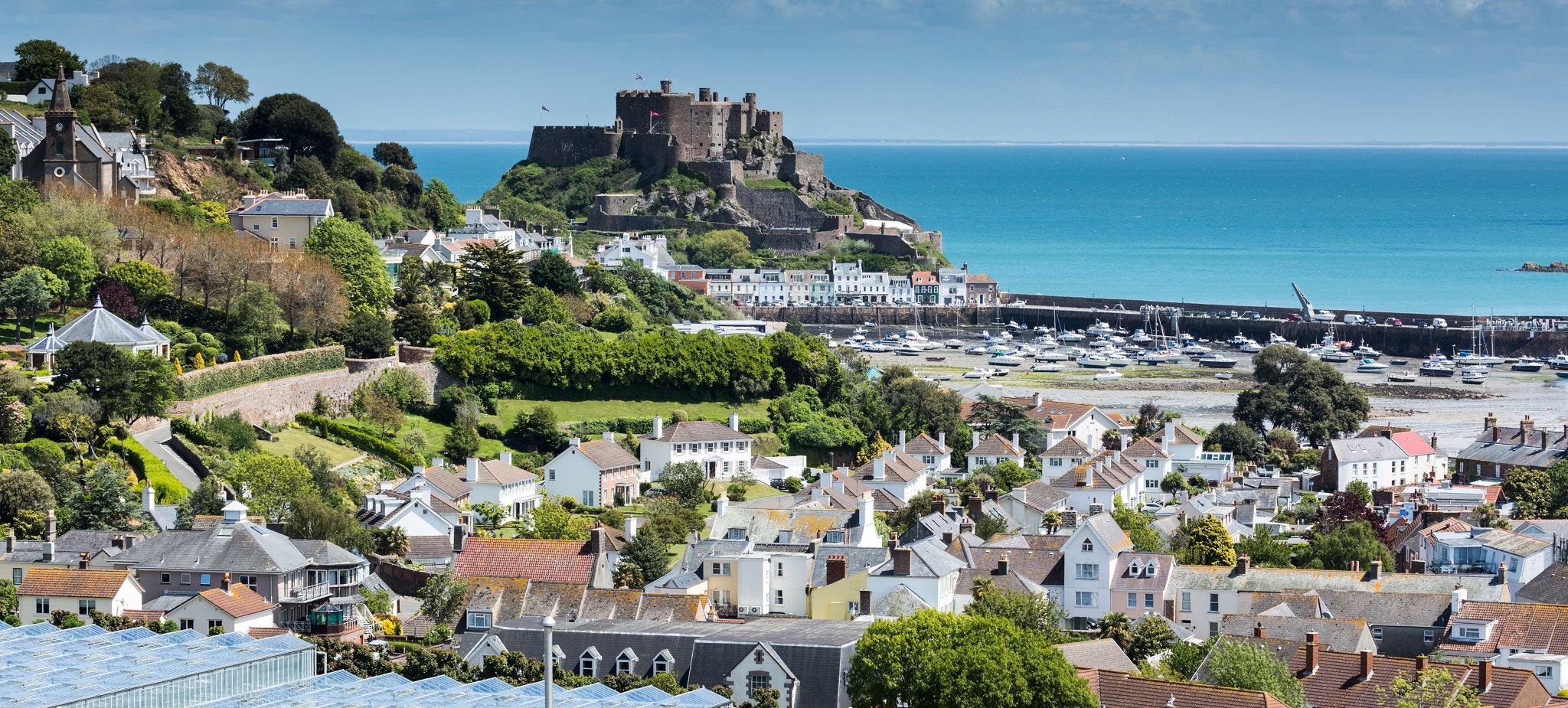
Jersey
The island is shaped by a unique mix of British and Norman influences. The many winding roads and hedgerows are reminiscent of English country lanes, with tree-covered roads being particularly common. However, due to Jersey’s unique geographical position, most coverage features sunny weather.
All images were taken by a Generation 2 camera.
Jersey licence plates follow the British model, having a long white front and yellow rear plate. In addition, you will notice the island’s red coat of arms on the left, as well as the letter ‘J’ at the beginning of all codes in unblurred plates.
NOTE: In contrast to the British mainland, Jersey was never a member of the European Union. This means that local plates do not have a blue strip.
In general, road infrastructure is similar to that found in the United Kingdom. This includes driving on the left, as well as directional signs, chevrons and warning signs. Some of the subtle differences are discussed below.
Similarly, the local architecture shares many characteristics with that of northern France. This includes pastel-coloured walls and dark slate roofs. However, British-style terraced houses are also common.
Jersey uses yellow give-way lines at intersections.
NOTE: In contrast, the UK typically uses double dotted white lines for this purpose.
Jersey has an extensive network of cycling routes. Most notably, you will find signs referencing the start or end of a “Green Lane”. Blue route markers, containing a map of the island in the centre, are also common.
Imagery containing a greenish-purple discolouration can be found in the southwest of the island.
NOTE: This glitch typically makes parts of the screen appear darker than they actually are. In addition, it blends into the landscape more seamlessly than other glitches.
Moreover, this glitch is not unique to Jersey. It can be found in other countries as well.




















